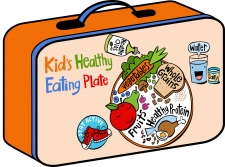Deep Fried Debauchery - 4 Fried Foods Only Found in American State Fairs
Author: admin /In the U.S., state fairs are a time of celebration and fun. It's also a time where Americans push the limits of decency when it comes to fried foods. While some fried foods found at state fairs are somewhat on the benign side (think deep-fried donuts), there have been, and continue to be, other foods that...just...well...you'll just have to read on.
Here are our top 4 fried foods found at state fairs in the United States:
1. Fried Beer. Ok, it's not actually fried beer, since you can't fry liquids (and it would be a waste of beer). The food is actually a ravioli that is filled with beer and then deep fried. The ravioli is a dough, much like that of a pretzel and then cooked in oil for less than 30 seconds. Because there is alcohol in the ravioli, anyone who wants to buy one (or a dozen) must be of legal drinking age.
It’s safe to say that restaurants have been around far longer than TV commercials to promote them. But TV has played a major role in the success of many restaurants. Big, international chains as well as smaller local brands know the importance of exposure and are turning to TV (and now YouTube and other media channels) to promote their brands with the goal of increased revenue.
Setting all the extraneous internal marketing aside, we’re going to focus this post on the part where a restaurant brand (or its marketing agency) reaches out to production companies with a brief in order to get proposals.
Sometimes, certain marketing promotions pay off big-time for QSR and fast-casual restaurant operators. This kind of success can make it tempting to re-use those same promotions or marketing tactics. But there comes a point where this strategy may backfire - in a big way.
Take Burger King, for example. With same-store sales slumping (down 0.5%) across the USA and Canada leadership at the brand need only look to one place in particular:
Cheetos Chicken Fries.
While the predecessors to the Cheetos Chicken Fries (Chicken Fries and Mac ‘n Cheetos) made a relatively decent splash in the market, the latest iteration of the fries fell flat. Very flat, in fact.
Restaurant Loyalty Programs: A Great Boost For Sales When Done Right
Author: admin /Contrary to popular belief, your delicious menu items are not enough to keep your customers loyal. All it takes is a new brand with better items and a little advertising (word-of-mouth or otherwise) to lure a customer away.
A good loyalty program can help mitigate this kind of brand migration, but it has to do two things consistently to work to a brand's benefit.
First of all, a loyalty program must be easy to use. The best restaurant loyalty programs are those that are chain-wide - meaning you can earn and redeem loyalty points at any location. Each franchisee has agreed to be part of the program, understanding the importance of loyalty and how it is good for the brand and, therefore, good for the location(s) they operate.
Chain-operated programs tend to be top-notch as there is a lot riding on them. If the system is down brand-wide, you get a lot of very unhappy customers brand-wide. Their loyalty becomes weakened and it's possible that they may start considering other brands.













